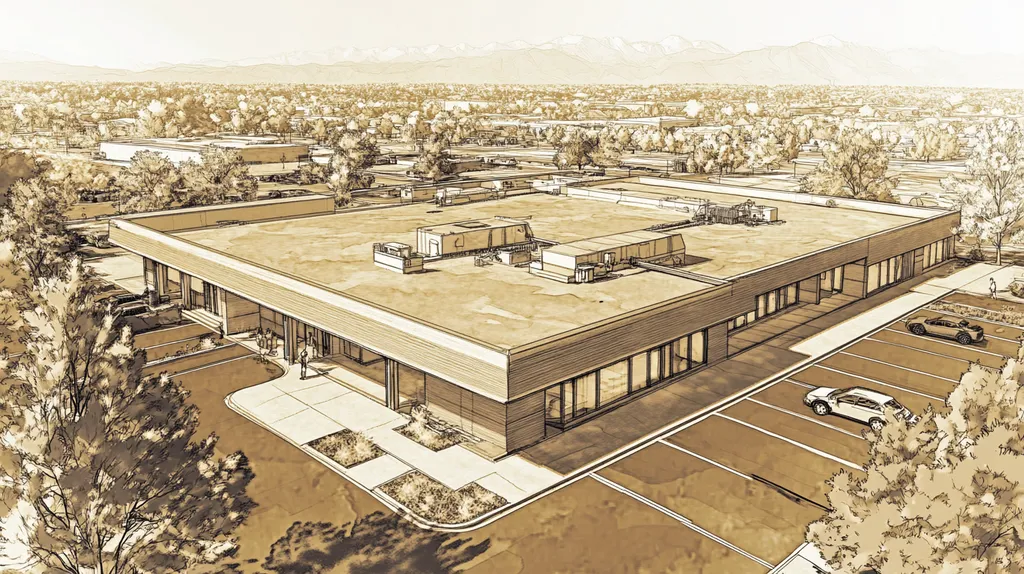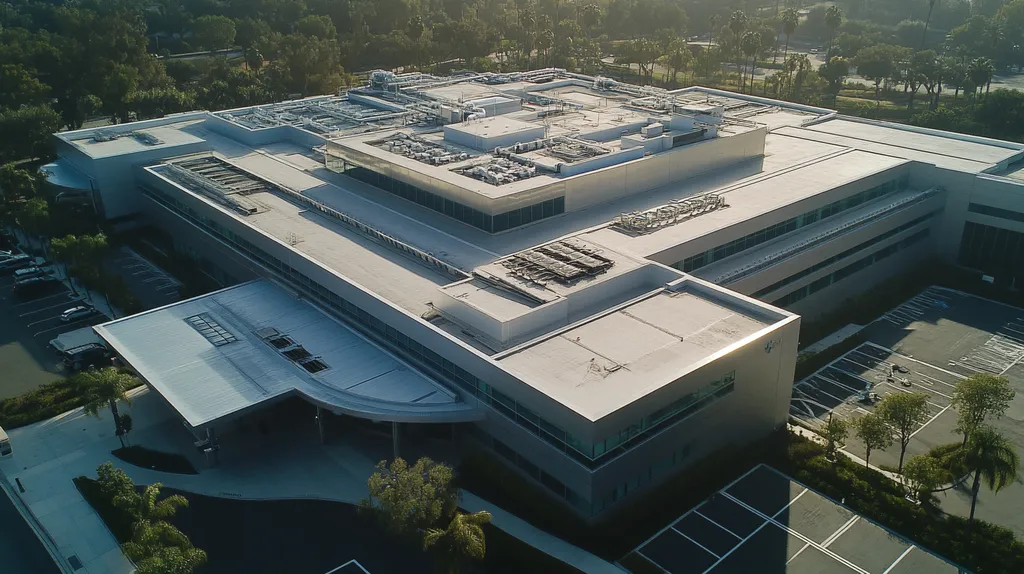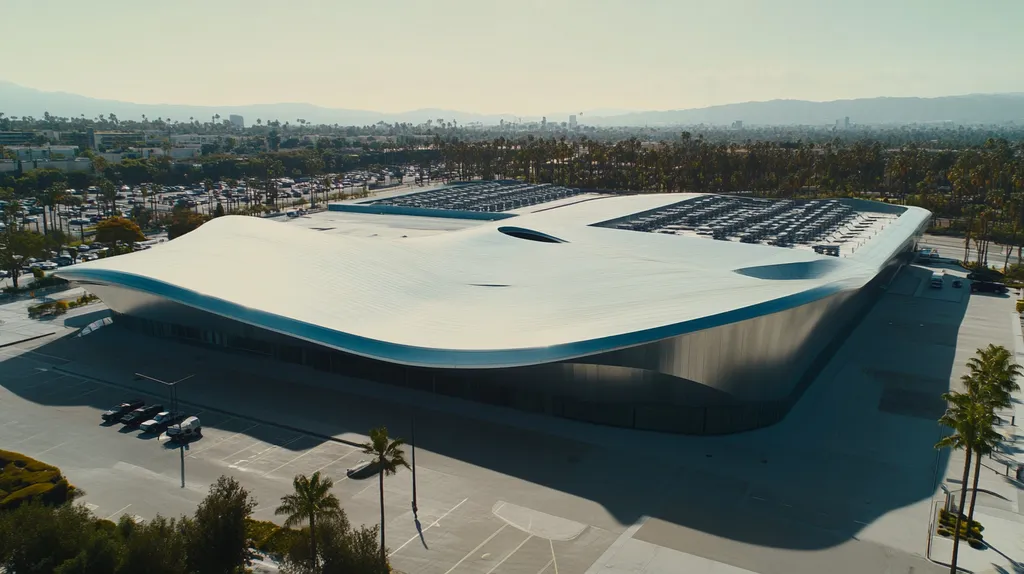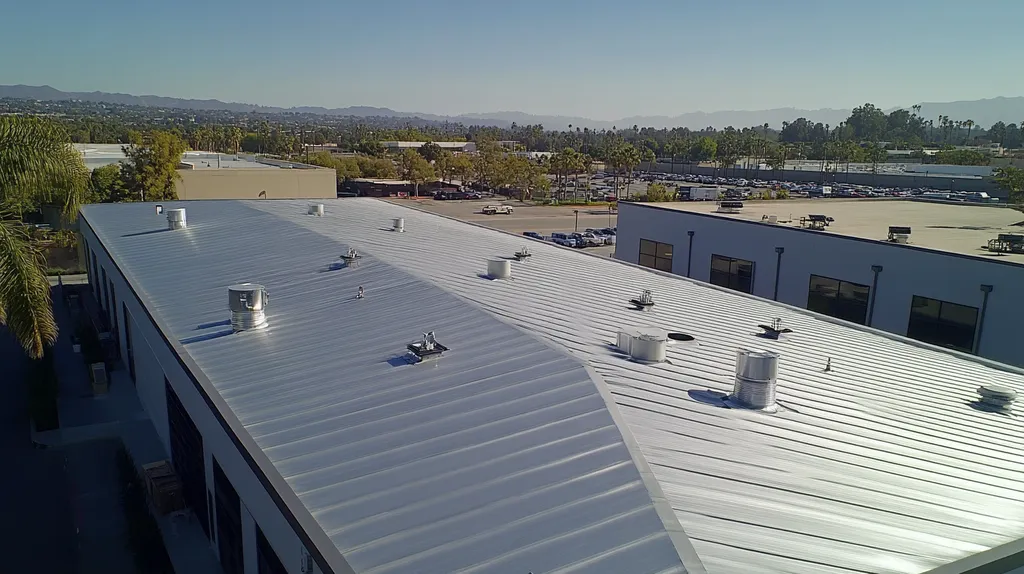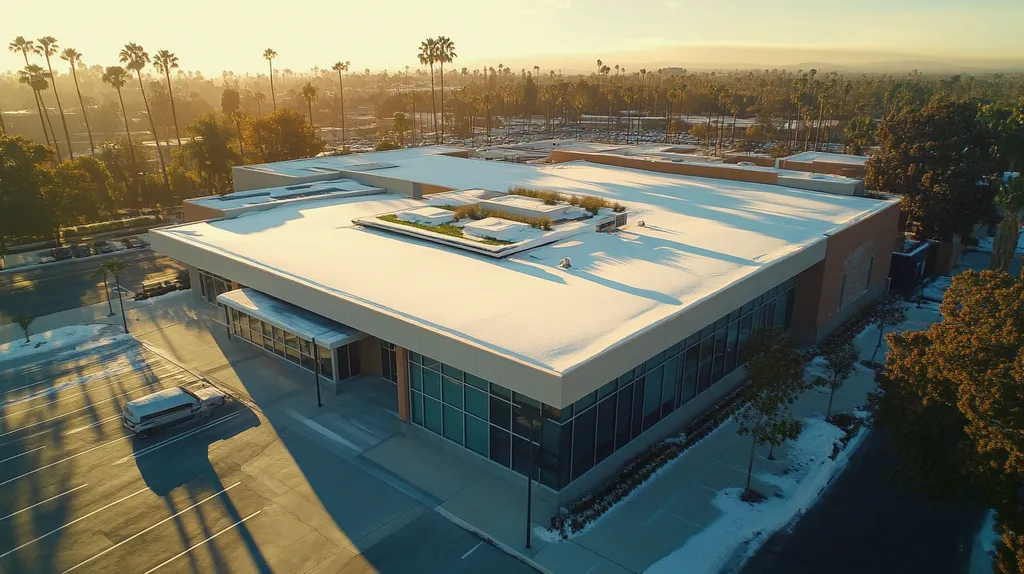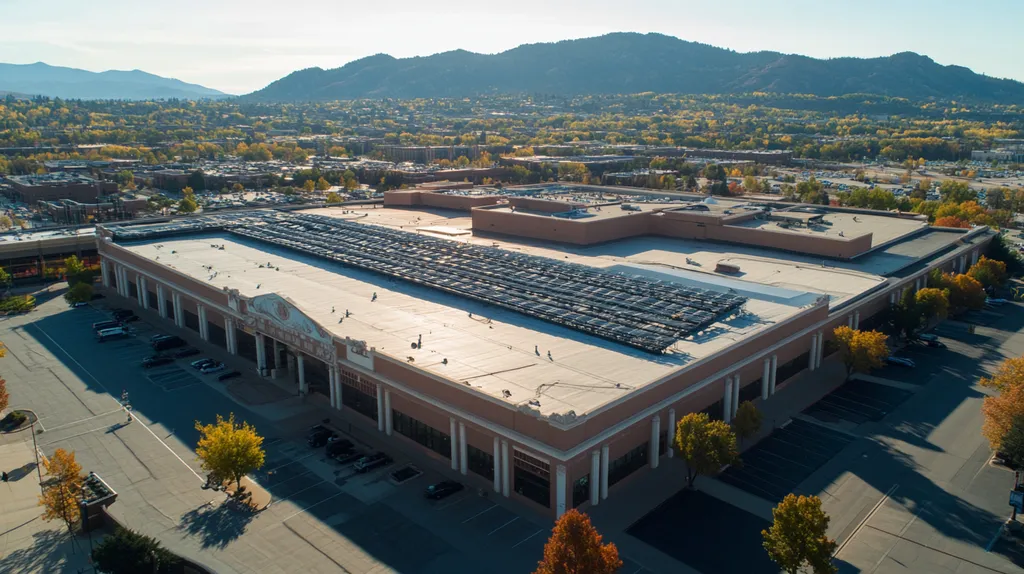Poor drainage on commercial roofs costs U.S. businesses over $1 billion annually in water damage repairs, structural failures, and reduced property values. Industry studies show that up to 90% of roof failures stem from inadequate drainage maintenance.
For facility managers, understanding and implementing proper drainage solutions is critical for protecting valuable assets and avoiding catastrophic failures. The stakes are particularly high as climate change drives more frequent extreme weather events.
This comprehensive guide provides actionable strategies for drainage system assessment, maintenance protocols, and risk mitigation techniques that help preserve roof integrity and prevent costly water damage.
SECTION 1: PERFORMANCE FACTORS
Ensuring proper drainage on commercial roofs is essential for preserving structural integrity and avoiding expensive damage. The American Society of Civil Engineers reports that poor drainage can lead to over $1 billion in annual roof repairs and water-related damage. For facility managers, understanding the vital components of drainage systems, recognizing signs of ponding, and evaluating drain functionality is crucial to mitigating these costly risks.
Key Components of Commercial Roof Drainage Systems
To achieve effective roof performance, it’s essential to grasp the key elements of a commercial roof drainage system. This typically includes gutters, downspouts, scuppers, and internal drains, all working together to divert water away from the roof surface.
Gutters collect and channel water toward downspouts, while scuppers provide an outlet for water to flow off the roof. Internal drains are particularly important for flat roofs, as they help prevent standing water that can lead to leaks and structural issues.
Additionally, a proper roof slope is vital for optimal drainage. A recommended slope of 1-2% ensures that water flows efficiently towards drains. Routine inspections of these components can help avoid blockages and potential system failures.
Key Action Items
Identifying and Verifying Roof Ponding and Water Accumulation
Ponding water is a serious threat to roofing membranes and can accelerate failures. For facility managers, it’s crucial to identify and address this problem promptly. Standing water often results from debris blocking drainage points or insufficient roof slope.
Conducting regular inspections after heavy rainfall can help pinpoint areas where water tends to accumulate. Managers should look for distress signs like discoloration or sagging in roofing materials.
After identifying these areas, it’s vital to verify the extent of the ponding with measurements. Areas where water remains for over 48 hours can experience significant deterioration of roofing materials. Solutions such as enhancing slopes or adding extra drains can effectively prevent future ponding issues.
Key Action Items
Assessing Drain Functionality and Debris Blockages
Maintaining drain functionality is critical for effective roof drainage. Regular assessments are necessary to ensure that drains are clear and operating correctly. Blockages from leaves, dirt, and other debris can significantly disrupt water flow and lead to backups.
Facility managers should conduct routine cleanings and visual inspections of drainage systems. Utilizing tools like cameras can aid in locating hidden debris within drainage pipes, enhancing inspection efficiency.
Furthermore, installing and maintaining drain covers can prevent larger debris from entering the system. Consistent debris removal helps minimize blockage risks and ensures optimal drainage effectiveness.
Key Action Items
SECTION 2: FINANCIAL CONSIDERATIONS
Proper drainage on commercial roofs is not merely a maintenance concern; it has significant financial implications. The National Roofing Contractors Association notes that drainage-related issues contribute to as much as 75% of commercial roof failures. Property owners and facility managers need to be aware of the potential costs associated with drainage failures, the necessity of budgeting for maintenance, and the financial rewards of upgrading drainage systems to avert catastrophic water damage.
Cost Implications of Drainage Failures and Water Damage
Neglecting drainage systems can result in severe water damage and financial setbacks. When water accumulates on the roof, it can cause structural harm, compromise insulation, and foster mold growth. Fixing these problems can lead to staggering repair expenses, especially if the issues are not addressed swiftly.
A facility experiencing a roof collapse due to inadequate drainage might incur costs running into hundreds of thousands of dollars. This figure encompasses emergency repairs, loss of productivity during the downtime, and possible liability claims.
Moreover, water damage can lead to the rapid deterioration of roofing materials, effectively shortening their lifespan. Replacing a damaged roof could cost anywhere from $5 to $10 per square foot, depending on materials and the scope of work needed.
Key Action Items
Budgeting for Drain Maintenance and Timely Repairs
Facilities must prioritize regular drain maintenance in their budgets to prevent costly drainage failures. A structured maintenance plan that includes routine inspections can identify potential issues before they escalate. It is typically recommended to allocate 1-2% of the total roof investment each year for maintenance.
Essential maintenance tasks involve cleaning gutters, inspecting drainage systems, and promptly addressing minor repairs. For example, maintaining roof drains through simple cleaning can cost a facility as little as $200 annually.
Investing in these small maintenance tasks can help facility managers avoid much larger, unforeseen expenses from neglected drainage systems. Without appropriate budgeting, unanticipated costs could significantly disrupt overall operational budgets.
Key Action Items
Financial Benefits of Proactive Drainage System Upgrades
Investing in updated drainage systems can provide significant financial benefits over time. Modern drainage technologies are better equipped to handle water efficiently, reducing the chances of ponding and related damage.
Upgrading by adding more drainage outlets or incorporating advanced systems can prolong the life of the roof, thus delaying replacement costs. These improvements not only enhance building performance but also contribute to better energy efficiency.
Additionally, facilities that proactively improve their drainage systems often benefit from reduced insurance premiums, as insurers appreciate the lower risk associated with well-maintained roofs. This can lead to notable annual savings.
Key Action Items
SECTION 3: COMPLIANCE REQUIREMENTS
Adhering to compliance requirements for roof drainage is not merely a regulatory obligation; it is essential for safeguarding properties and preventing costly repercussions. Many facility managers underestimate the importance of knowing and following building codes that regulate drainage systems. Failure to comply can result in expensive fines, legal issues, and risks to the health and safety of building occupants. Therefore, a solid understanding of these compliance requirements is vital for effective risk management and smooth operations.
Building Codes and Standards for Roof Drainage Systems
Building codes establish the minimum standards necessary for effective roof drainage systems, ensuring both safety and performance. These regulations can vary significantly by location and typically include specifications on drainage capacity, materials, and methods of installation. For example, the International Building Code (IBC) provides pertinent guidelines for configuring roof drains to manage water runoff efficiently.
Facility managers must remain informed about both local and national codes that apply to their roofs. Non-compliance not only heightens the risk of inspections failing but may also result in hazardous water damage that incurs hefty repair costs. Regular consultations with roofing professionals ensure that drainage systems adhere to all legal requirements and standards.
Adherence to these codes is not a one-time effort. Changes may occur based on evolving weather patterns or advancements in roofing technology. Staying updated on these changes helps protect investments in roofing while maintaining compliance.
Key Action Items
Ensuring Drain Strainer and Flashing Compliance
Drain strainers and flashing are crucial components of effective roof drainage systems. Their proper installation and ongoing maintenance are essential to prevent water accumulation, which can lead to significant damage and compliance risks. Strainers must be able to efficiently filter out debris to keep drains clear and functioning optimally.
Meanwhile, flashing acts as a protective barrier against water infiltration at roof seams, which can put a facility at serious risk if not managed properly. If strainers and flashing are not installed per industry standards, compliance violations may incur heavy penalties.
Integrating regular inspections into maintenance schedules will ensure these components remain fully operational and compliant. Keeping thorough records of both their condition and maintenance history can provide valuable evidence during audits.
Key Action Items
Documentation and Inspection Reporting for Regulatory Audits
Robust documentation and thorough inspection reporting are critical in proving compliance with drainage standards. Facility managers should maintain detailed records of all inspections, maintenance, and repairs performed on roof drainage systems. These documents are invaluable during regulatory audits and can avert costly penalties.
Regular inspections conducted by certified professionals not only reinforce compliance but also help identify potential drainage issues before they escalate into major expenses. Implementing a transparent inspection schedule, complete with a checklist covering all aspects of drainage systems, ensures thoroughness.
Good documentation practices enhance transparency and accountability in facility operations. This diligence encourages adherence to best practices, thereby mitigating risks associated with non-compliance.
Key Action Items
SECTION 4: RISK MANAGEMENT
The consequences of improper drainage on commercial roofs can be severe. Ponding water not only threatens structural integrity but can also lead to expensive repairs and serious safety concerns. With nearly 25% of roofing failures linked to inadequate drainage systems, understanding these risks is crucial for facility managers. This section delves into the dangers of poor drainage, outlines key preventative measures, and emphasizes the importance of having an effective emergency response plan in place.
Evaluating Risks from Improper Drainage and Ponding Water
Improper drainage can create significant hazards for commercial buildings. Ponding water adds unnecessary weight and can stress the roofing system, leading to cracks and leaks over time.
Moreover, standing water is a pathway for moisture to infiltrate the building, raising the risks of leaks that can damage both the structure and its contents. If left unchecked, this condition can even result in roof collapses during heavy rains or snow.
Additionally, stagnant water promotes mold growth, which poses serious health risks for occupants, such as respiratory issues and allergic reactions. Facility managers must prioritize the evaluation of drainage systems to maintain roof safety and integrity.
Key Action Items
Preventative Measures to Minimize Structural and Mold Risks
Implementing a solid maintenance plan is essential to prevent drainage-related problems. Regular inspections should focus on identifying issues early, ensuring that drains and gutters are clear of debris to avoid clogs.
In addition, installing features like scuppers and additional drains can efficiently channel water away from high-risk areas, combining to reduce the risk of standing water. Scuppers serve as vital outlets that prevent roofs from holding water like a bathtub.
Lastly, selecting roofing materials that withstand moisture is crucial. Membranes with strong moisture resistance not only prolong the roof’s lifespan but also combat mold risks. Training staff on the importance of drainage maintenance promotes a proactive culture.
Key Action Items
Emergency Response Planning for Drainage System Failures
No drainage system is fail-proof, making emergency response planning vital. Facilities should establish a clear protocol for responding to drainage emergencies, such as sudden rainfalls or unexpected clogs.
Providing a list of contacts, including roofing contractors and restoration experts, helps ensure swift responses to drainage failures, minimizing damage and costs. Keeping this information readily accessible can make all the difference during a crisis.
Moreover, conducting emergency response drills can prepare staff for effective responses to drainage failures. Simulated exercises familiarize personnel with their roles and responsibilities, enhancing overall readiness for emergencies.
Finally, documenting incidents and corrective actions taken during drainage emergencies helps refine future planning, improving the building’s resilience over time.
Key Action Items
SECTION 5: OPERATIONAL PROCEDURES
Effective drainage on commercial roofs is essential to prevent costly damage and extend the life span of the roof. With statistics indicating that over 50% of commercial roof failures arise from inadequate drainage solutions, implementing routine operational procedures is crucial. This section presents key practices facility managers can adopt to keep drainage systems functioning optimally and minimize the risk of water pooling and related issues.
Routine Inspection Checklist for Roof Drainage Components
A routine inspection checklist is vital for maintaining roof drainage systems. Inspections should be scheduled at least twice a year, ideally during spring and fall, to manage seasonal debris buildup. Each inspection must encompass checking for clogs in gutters, downspouts, and drains, as well as spotting signs of water pooling or leaks.
Inspectors must evaluate the overall condition of the roof surface and drainage components. Look out for membrane cracks, damaged flashing, or slopes insufficient for proper drainage. Even minor issues can escalate into significant problems if not promptly addressed.
Documenting inspection results is essential for tracking recurring issues and guiding future maintenance decisions. A comprehensive log helps prioritize repairs and necessary drainage improvements. Proactively managing these inspections can greatly reduce the potential for water-related concerns.
Key Action Items
Effective Debris Removal and Drain Cleaning Protocols
Debris accumulation can quickly obstruct drainage systems, making regular removal essential. Establish a cleaning schedule that correlates with seasonal weather patterns and identifies likely debris sources, such as nearby trees or ongoing construction projects. Consistent cleaning helps ensure water flows freely off the roof.
Utilize appropriate tools such as leaf blowers, brooms, and pressure washers for efficient debris removal. It’s important that facility managers train staff in safe practices to avoid injuries and protect roofing materials from damage.
In addition to regular cleaning, conduct comprehensive cleanings at least once a year. This deep cleaning routine can reveal hidden clogs and verify that all drainage components are functioning as they should. Engage professional services for high roofs or complex drainage systems as needed.
Key Action Items
Coordinating Maintenance Schedules with Facility Operations
Aligning roof maintenance schedules with overall facility operations is crucial for minimizing disruption. To lessen impact on daily activities, plan maintenance during low-activity periods, such as off-peak hours or weekends. This strategic timing can help ensure that inspections and repairs occur without interrupting business.
Engaging with facility operation teams during the planning phase enhances collaboration and resource allocation. This unity helps ensure that maintenance activities align with broader facility management objectives.
Communication with stakeholders about upcoming maintenance schedules is equally important. By providing advance notice, facility managers can foster better planning and mitigate potential disruptions during maintenance activities. This approach ultimately leads to more effective facility management and improved drainage outcomes.
Key Action Items
SECTION 5: OPERATIONAL PROCEDURES
Effective drainage on commercial roofs is essential for preventing costly damage and extending the lifespan of the roof. Statistics indicate that over 50% of commercial roof failures arise from inadequate drainage solutions. Implementing routine operational procedures helps ensure drainage systems stay clear and functional, significantly minimizing the risk of water pooling and related issues. This section outlines crucial practices that facility managers should adopt for effective drainage management.
Routine Inspection Checklist for Roof Drainage Components
A solid routine inspection checklist is vital for maintaining roof drainage systems. Schedule inspections at least twice a year, ideally during spring and fall, to address seasonal debris and weather impacts. Each inspection should focus on checking for clogs in gutters, downspouts, and drains, as well as spotting signs of water pooling or leaks.
Inspectors should also assess the roof surface and drainage system components. Look for cracks in the membrane, damaged flashing, or insufficient slope directing water to drainage areas. Even minor issues that go unaddressed can escalate into significant problems.
Documentation of inspection results is equally important. Keeping a comprehensive log helps track recurring issues and informs future maintenance decisions. Use this data to prioritize any necessary repairs and drainage improvements.
Key Action Items
Effective Debris Removal and Drain Cleaning Protocols
Debris accumulation on commercial roofs can obstruct drainage systems, making regular removal essential. Establish a cleaning schedule aligned with seasonal weather patterns and potential debris sources like nearby trees or construction sites. Consistent cleaning helps ensure water can flow freely off the roof.
Utilize appropriate tools such as leaf blowers, brooms, and pressure washers for efficient debris removal. Facility managers should also train staff on safe debris removal practices to prevent injuries and protect roofing materials from damage.
In addition to routine cleaning, conduct deep cleaning inspections at least once a year. This comprehensive approach reveals hidden clogs and ensures all drainage components work effectively. Professional services should be engaged for high roofs or complex drainage systems when necessary.
Key Action Items
Coordinating Maintenance Schedules with Facility Operations
Coordinating roof maintenance schedules with overall facility operations is critical to minimizing disruptions. Timing is key; plan maintenance for low-activity periods to reduce the impact on daily operations. Consider scheduling inspections during off-peak hours or weekends when employees are less present.
Engaging with facility operation teams during the planning phase helps identify challenges and optimize resource allocation. This collaborative effort ensures maintenance activities align with broader facility management objectives.
Additionally, communicate maintenance schedules to all stakeholders in advance. Providing timely notice enables better planning and can mitigate any potential operational disruptions.
Key Action Items
The Bottom Line
With over $1 billion in annual damages from poor roof drainage, facility managers cannot afford to overlook this critical aspect of building maintenance. Industry data shows that 90% of commercial roof failures stem from drainage issues.
Implementing proper drainage solutions requires a systematic approach across multiple areas: regular inspections, preventive maintenance, code compliance, and emergency preparedness. The cost of inaction far exceeds the investment in proactive drainage management.
As extreme weather events become more frequent, the importance of maintaining effective roof drainage systems will only increase. Facilities that fail to address drainage issues face escalating risks of structural damage, mold growth, and catastrophic failures.
By following the guidelines and checklists outlined in this guide, facility managers can protect their properties while avoiding costly repairs and premature roof replacement.
FREQUENTLY ASKED QUESTIONS
Q. What are key components of a commercial roof drainage system?
A. Key components include gutters, downspouts, scuppers, and internal drains, which work together to divert water away from the roof.
Q. What financial implications arise from drainage failures on commercial roofs?
A. Drainage failures can lead to severe water damage and expensive repairs, significantly impacting operational budgets.
Q. How can I ensure compliance with drainage standards for my commercial roof?
A. Regularly review local building codes and consult with roofing professionals to ensure compliance with all drainage standards.
Q. What are the risks of improper drainage on industrial roofs?
A. Risks include structural damage, water leaks, mold growth, and potential health issues for occupants due to poor roof drainage.
Q. How often should I inspect drainage systems on commercial roofs?
A. Inspections should be conducted at least twice a year, preferably during spring and fall, to address seasonal issues.
Q. What protocols should be in place for emergency drainage failures?
A. Establish a response protocol that includes a contact list of professionals and training staff on emergency procedures.
Q. What materials should I consider for effective drainage on commercial roofs?
A. Use high-resistance roofing materials that are moisture-resistant to prolong the roof’s lifespan and minimize mold risks.

